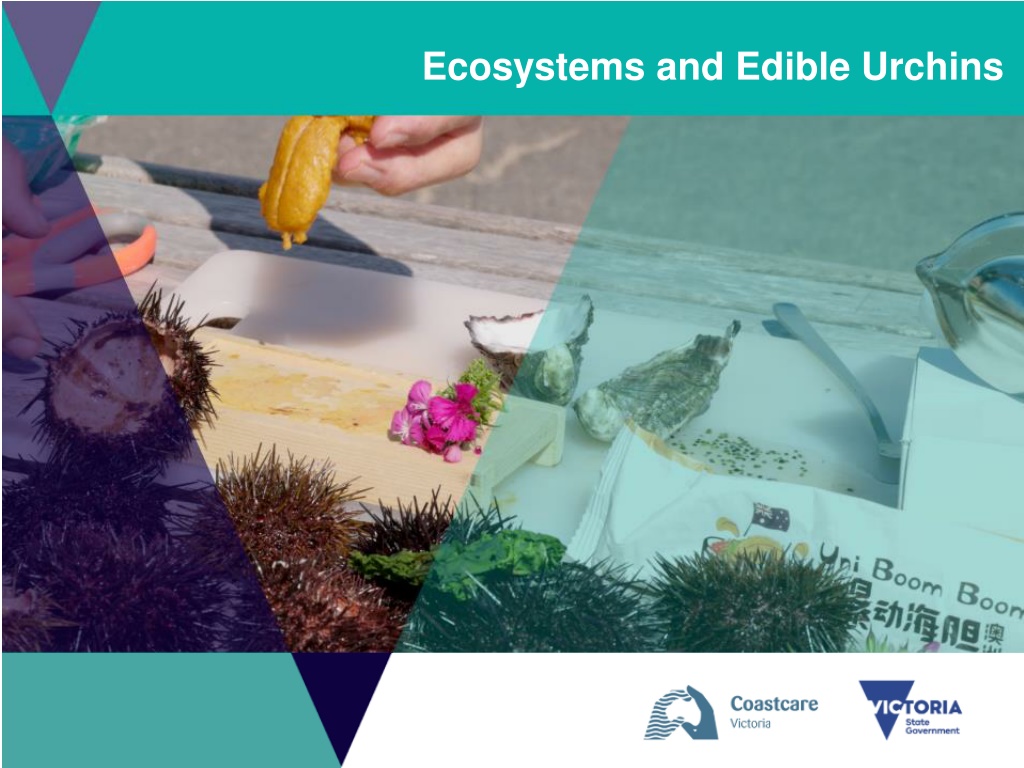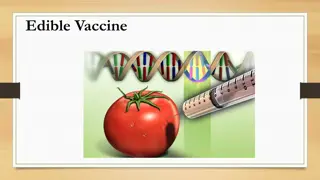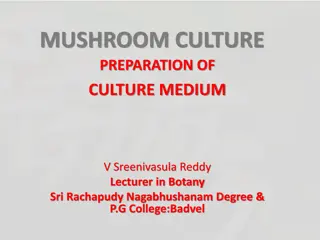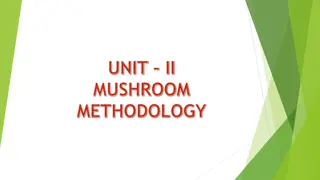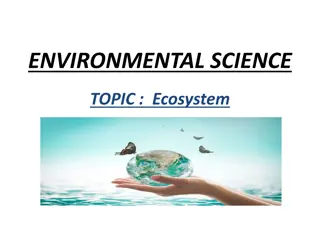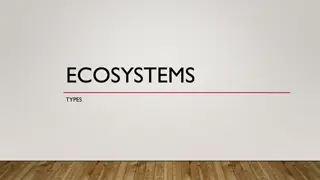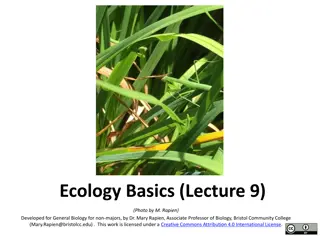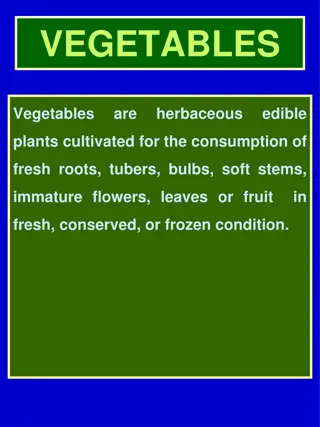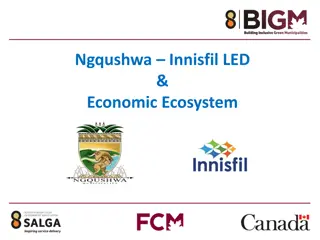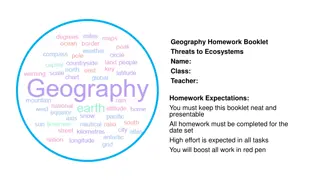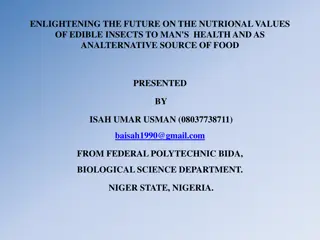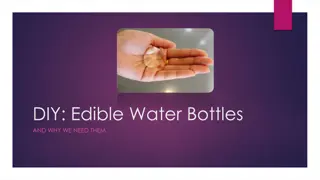Explore Ecosystems and Edible Urchins Through Engaging Activities
Dive into the world of ecosystems and edible urchins with a variety of interactive activities including video lessons, quizzes, comic strip creation, and investigations on sustainable seafood. Discover the importance of biodiversity, food chains, and species interactions in marine environments while having fun and learning valuable scientific concepts.
Download Presentation

Please find below an Image/Link to download the presentation.
The content on the website is provided AS IS for your information and personal use only. It may not be sold, licensed, or shared on other websites without obtaining consent from the author. Download presentation by click this link. If you encounter any issues during the download, it is possible that the publisher has removed the file from their server.
E N D
Presentation Transcript
Ecosystems and Edible Urchins OFFICIAL
Lesson Outline Video Game Quiz Comic Strip Activity Top Down System Activity Adaptations Investigation Urchin Sampling Activity Sustainable Seafood Investigation OFFICIAL
Video: Ecosystems and Edible Urchins Video Link: https://www.marineandcoasts.vic.gov.au/coastal-programs/coastcare- victoria/coastcare-victoria-school-kit OFFICIAL
Quiz It s time for a quick quiz to see what you can remember from the video! There are a total of 10 multiple choice questions OFFICIAL
Sea Urchins Sea Urchins are spiny echinoderms Echinoderms are a group of organisms that have spiny skin Sea Urchins are herbivores OFFICIAL
Whats the problem? Activity Review the text front the video explaining what scientists think caused the urchin problem. As the video plays underline biotic (living) factors and circle abiotic (non-living factors). OFFICIAL
Top Carnivores Tertiary Consumer Carnivores Secondary Consumer Herbivores Primary Consumer Primary Producers OFFICIAL
Top down The presence of predators keeps the herbivores in check, ensuring that the producers are not over exploited. OFFICIAL
Bottom up Here, lack of food has caused a decrease in the populations of higher trophic levels. OFFICIAL
Comic Strip Activity Use the text front the video explaining what scientists think caused the urchin problem to create a comic strip. OFFICIAL
Extension Video: Ecosystems and Edible Urchins Who's been eating all the kelp? | IMAS Long spine sea urchins have a ferocious appetite. How do we stop them? The long spine sea urchin can have devastating impacts on reefs due to overgrazing, which creates expansive urchin barrens. This results in negative impacts on kelp beds and reef dependent species such as abalone, rock lobster and fish. IMAS scientists have conducted research on the urchin and associated barrens along the Tasmanian coast for more than seventeen years. This is the story of how we can combat these invasive urchins and win back our reefs. More information on the scientific studies: http://www.imas.utas.edu.au/research/fisheries-and-aquaculture/fisheries/Long-spined-sea-urchin-Centrostephanus-Rodgersii This animation was made in collaboration with IMAS and the Tasmanian Government. OFFICIAL
Adaptations Adaptations are a special way that an organism is suited to survive and reproduce in an environment. Adaptations help and organism to survive / reproduce. OFFICIAL
Adaptations There are three main types of adaptations: Behavioural: things organisms do to survive / reproduce Physiological: a body process that helps an organism survive / reproduce. Structural: a physical feature that helps an organism survive / reproduce. OFFICIAL
Adaptations Investigation Urchins are highly successful animals that can be found in all of the world s oceans, to depths as deep at 5000m! There are 950+ species worldwide. Only an animal highly suited (adapted) to their environment could be so successful. In this task you will investigate the various adaptations of sea urchins using the Urchin adaptations investigation worksheet. OFFICIAL
Sampling Often when sampling underwater scientists use a square called a quadrat to count organisms of interest in an area. They can then extrapolate to make predictions about the broader densities of that organism over the area of the reef. OFFICIAL
Urchin Sampling Activity In this activity you will learn about scientific data collection methods. Using the Urchin investigation reef grids or online lesson version, you can collect data on the urchin densities in five different reefs. Compare results with others in the class. You may like to turn this activity in a competition between individuals or as groups to see who can get the closest estimates to the actual reef numbers. OFFICIAL
Activity Reflection How accurate were your estimates? Reflect on the experimental design, how could the experiment be improved to be more accurate? OFFICIAL
Collecting Urchins Removing urchins from the reef may help seaweed grow back Urchins are considered a sustainable seafood People with a license can collect 40 urchins per person per day Urchins must be collected below 2m deep and never from a marine sanctuary. OFFICIAL
Eating Urchins Currently in Australia eating sea urchins is rare but there are many urchins in the local waters. More people eating urchins may be better for the environment. What makes other marine species sustainable? OFFICIAL
Sustainable Seafood Investigation As general rule, the lower they are in the food chain and the more sustainable they are likely to be. Often the smaller the prey of the organism, the more sustainable it is likely to be. A traffic light system is often used to indicate sustainability: Green = sustainable Orange = eat les Red = say no OFFICIAL
Review Questions It s time to check your understanding. Fill out the review worksheet on top down systems. OFFICIAL
